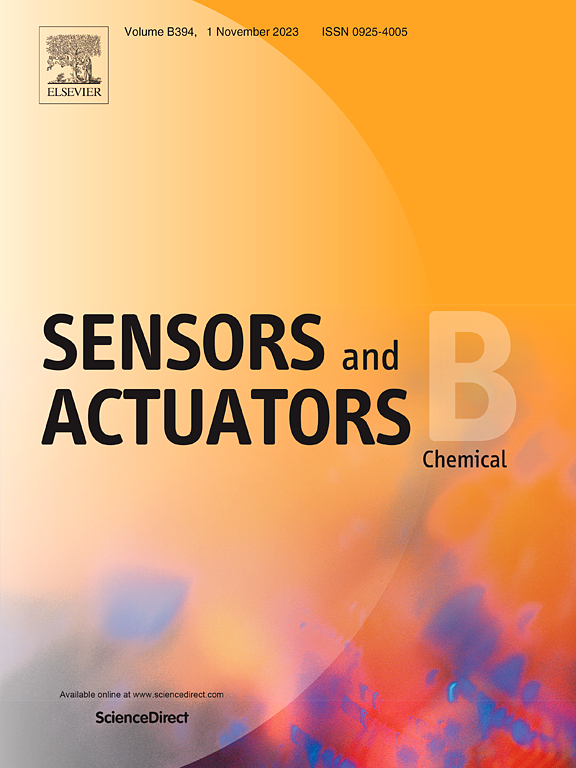具有丰富介孔的mof衍生ZnO/NiO层次化双金属,用于高性能三乙胺气体传感
IF 8
1区 化学
Q1 CHEMISTRY, ANALYTICAL
引用次数: 0
摘要
制备了具有优异三乙胺(TEA)气敏性能的ZnO/NiO介孔异质结构层次化双金属有机骨架(mof)。在MOF前驱体中引入Ni离子对ZnO/NiO异质结构的化学组成和形态演化起着重要的调节作用。制备的ZnO/NiO纳米复合材料具有丰富的中孔和较大的比表面积,提供了足够的活性位点和气体扩散通道。结果表明,与纯ZnO相比,高孔ZnO/NiO异质结构在200℃的工作温度下具有更高的TEA气敏性,Ra/Rg = 49.8,响应时间为11 s,具有优异的抗干扰能力和长期稳定性。利用mof作为自我牺牲模板,形成了p-n异质结,其带隙减小(2.81 eV),比表面积高(43.456 m2·g-1),孔隙率高,具有较高的TEA气敏性能。此外,氧空位的增加和与目标气体的高效氧化还原反应也是提高性能的重要原因。本研究提出了一种使用mof作为牺牲模板制备介孔多金属氧化物异质结构的简单策略,为定制和提高TEA气敏性能提供了可调的途径。本文章由计算机程序翻译,如有差异,请以英文原文为准。

Hierarchical bimetallic MOF-derived ZnO/NiO with abundant mesopores for high-performance triethylamine gas sensing
Hierarchical bimetallic metal organic frameworks (MOFs) derived mesoporous ZnO/NiO heterostructures with excellent triethylamine (TEA) gas sensing performance were prepared. The introduction of Ni ions in MOF precursors played an important role in regulating the chemical composition and morphology evolution of ZnO/NiO heterostructures. The resultant ZnO/NiO nanocomposites contain abundant mesopores formed by accumulation of nanoparticles and a large specific surface area, providing sufficient active sites and gas diffusion channels. As predicted, compared with pure ZnO, the highly porous ZnO/NiO heterostructure exhibited enhanced TEA gas sensitivity with Ra/Rg = 49.8 at an operating temperature of 200 °C, fast response time of 11 s, as well as excellent anti-interference ability and long-term stability. The high TEA gas sensing performance can be attributed to the formation of p-n heterojunction with reduced band gap (2.81 eV), high specific surface area (43.456 m2 g−1) and high porosity achieved through using MOFs as a self-sacrificing template. Additionally, the increase of oxygen vacancy and the efficient oxidation-reduction reaction with the target gas also contribute significantly to the enhanced performance. This study presents a straightforward strategy for preparing mesoporous multi-metal oxide heterostructure using MOFs as sacrificial templates, offering tunable pathways to tailor and improve TEA gas sensing performance.
求助全文
通过发布文献求助,成功后即可免费获取论文全文。
去求助
来源期刊

Sensors and Actuators B: Chemical
工程技术-电化学
CiteScore
14.60
自引率
11.90%
发文量
1776
审稿时长
3.2 months
期刊介绍:
Sensors & Actuators, B: Chemical is an international journal focused on the research and development of chemical transducers. It covers chemical sensors and biosensors, chemical actuators, and analytical microsystems. The journal is interdisciplinary, aiming to publish original works showcasing substantial advancements beyond the current state of the art in these fields, with practical applicability to solving meaningful analytical problems. Review articles are accepted by invitation from an Editor of the journal.
 求助内容:
求助内容: 应助结果提醒方式:
应助结果提醒方式:


